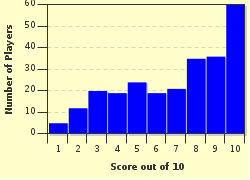Quiz Answer Key and Fun Facts
1. The largest of the prefectures in area is the only one that encompasses one of the four main islands. Name it.
2. Which two prefectures suffered attacks from atomic bombs during World War II?
3. Nagano Prefecture, nestled in the Japan Alps, hosted an important event in 1998. What was it?
4. Aichi Prefecture was not a familiar name to people outside Japan until it held the 2005 World Expo. What is the third largest metropolitan area in Japan and Aichi's capital?
5. Hyogo Prefecture, which touches both the Pacific Ocean and the Sea of Japan, isn't a household name for the Japan novice. However, its capital is famous for melt-in-your-mouth beef, a devastating earthquake in 1995, and being one of the first ports opened to the West in 1868. Can you guess Hyogo's prefecture's largest city?
6. To-Do-Fu-Ken refers to the four classifications of prefectures in Japan. "-To" is a metropolis, and is used only for Tokyo. Which two cities are classified as "-fu," or urban prefectures? (Hint: One is "Japan's Kitchen" and Tokyo's rival; the other is the center of traditional culture).
7. Which prefecture was once an independent kingdom that had tributary relations with China, and traded goods at faraway ports all over Southeast Asia?
8. Shikoku, the smallest of the four major islands, means "four provinces." Which four prefectures make up this region?
9. Let's say you want to see the Great Buddha (Daibutsu) statue in Todaiji (Todai Temple). After all, it sits in one of the largest wooden buildings in the world. Which prefecture would you visit? (This was Japan's ancient capital from 710 to 784.)
10. Aomori Prefecture, the northernmost prefecture on the island of Honshu, is the country's leading grower of a certain fruit. New Zealand and the Pacific Northwest United States are also major producers. Which fruit is it?
Source: Author
lykita
This quiz was reviewed by FunTrivia editor
Pagiedamon before going online.
Any errors found in FunTrivia content are routinely corrected through our feedback system.

